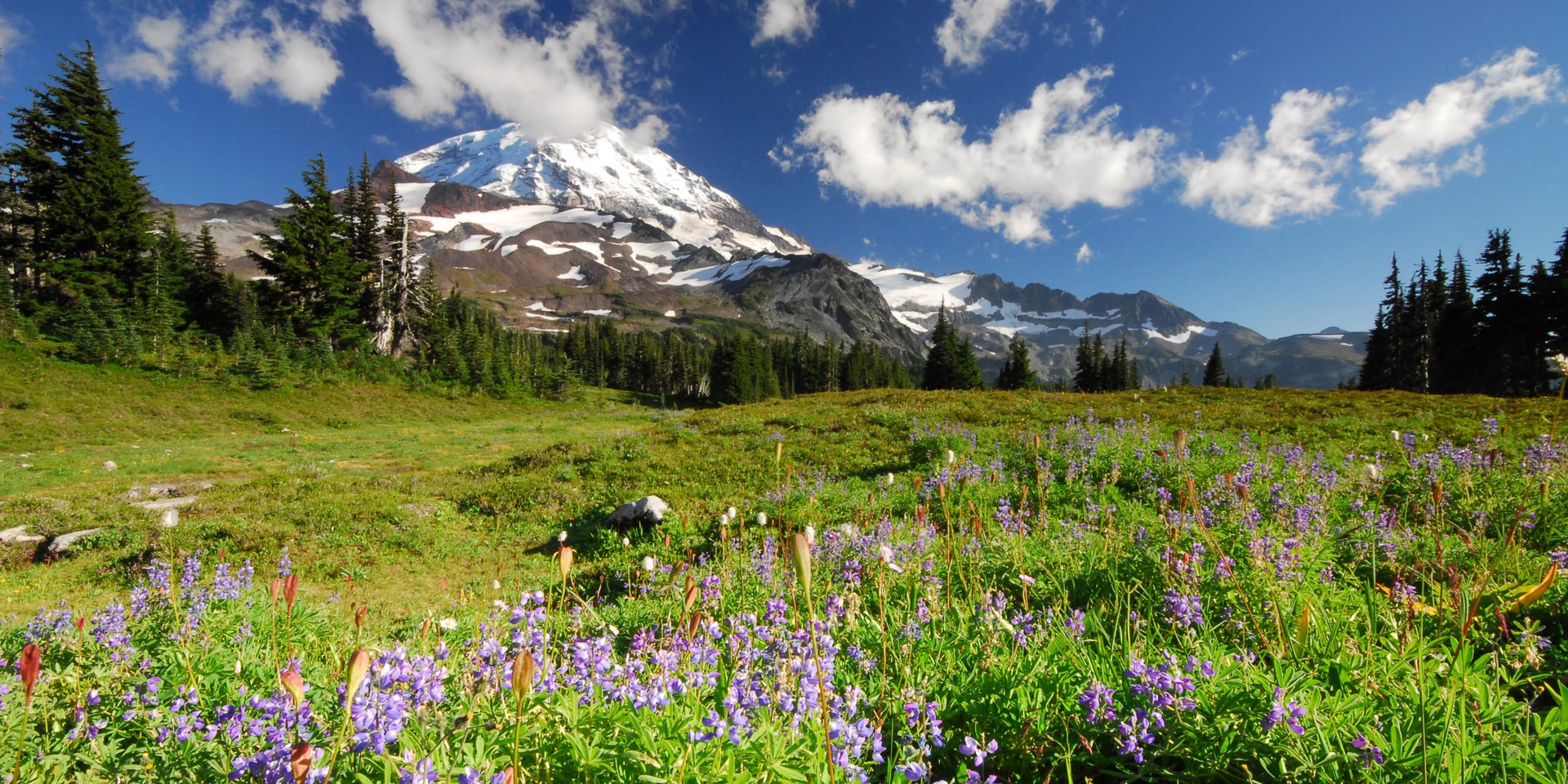You are here
If you are searching for a hike in Washington's Mount Rainier National Park that guarantees gorgeous Cascade views and proceeds over a diverse and challenging landscape, the hike to Spray Falls and Spray Park is an ideal choice. This hiking trail leads to two truly incredible destinations, the more easily accessible Spray Falls and the higher elevation Spray Park, so it's no wonder this day hike is extremely popular.
The trail begins at Mowich Lake Campground and quickly descends and cuts across Lee Creek into a thick forest dominated by noble fir and mountain hemlock. After hiking for roughly 1.2 miles, pay attention and be sure not to miss the short diversion to the Eagle Cliff viewpoint where Mount Rainier's 14,112-foot Liberty Cap and the Spray Creek Canyon come into full view. Roughly a half mile later you'll reach the turn for 354-foot Spray Falls, a broad cascade spilling over a massive exposed face of reddish andesite. Spray Falls is Mount Rainier National Park's second tallest easily accessible waterfall.*
From Spray Falls, a grueling series of switchbacks eventually leads up to Spray Park, a pristine subalpine oasis. Lupine, pink mountain heather, gentian and western bistort fill the fields that lie at the base of 14,411-foot Mount Rainier. Be sure to keep an eye out for bears; they are commonly spotted in this area of the park. Spray Park is made up of a series of numerous clearings that terrace and slope down toward the west from Mount Rainier. The Spray Park Trail continues all the way up to 6,400 feet, where it reaches a ridge separating Spray Park from Seattle Park to the east. From this crest, views of Mount Rainier are spectacular and well worth the extra push.
Some mountaineers choose to continue up to Echo Rock (7,870 feet) and Observation Rock (8,364 feet) via dispersed snow fields and the Flett Glacier, both of which are old volcanic vents that offer up-close views of the larger volcano and panoramic views to the north. Both formations are also quite crumbly, and approaches should be taken with great caution.
Note: Eagles Roost Campsites (shown on many USGS and National Geographic maps) have since been removed.
* With a total drop of 462 feet and its tallest drop of 392 feet, Comet Falls is the tallest waterfall in Mount Rainier National Park that is accessible by hiking. After hiking to see the magnificent Spray Falls, Comet Falls will be a must-see. Margaret Falls, dropping an impressive 1,350 feet from Cowlitz Park, is the park's tallest waterfall, but hiking to these falls is impossible for the overwhelming majority of visitors to the park. Fairy Falls, which drops 680 feet from Williwakas Glacier (just below Paradise Glacier), is the second tallest, but it is also inaccessible via hiking on established trails.
Logistics + Planning
Current Weather: Powered by Dark Sky
























Comments
Sign In and share them.